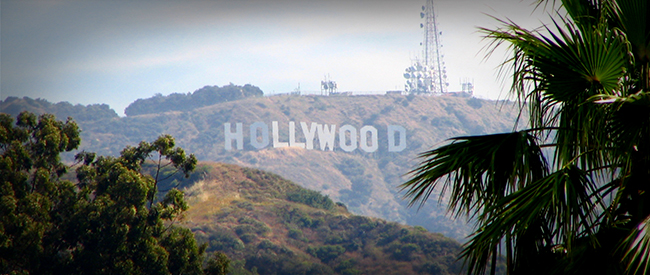“Talk to People, Knock on Doors”: Location Managers Find the Right Spot
Location, location, location. If you’ve ever heard that mantra, it’s probably because you’ve spent some time in close proximity to a real estate agent. But you don’t need a snappy port-wine blazer or glossy bus shelter ad to appreciate its significance—especially if you just so happen to be a low-budget filmmaker.
A good location can be an indie filmmaker’s biggest star or most important special effect. Conversely, slapdash location work can make your project look cheap and unprofessional. But short of bribing the groundskeeping crew at Universal Studios, how exactly do film productions find the best place to shoot?
Enter the locations manager—one of the most important (and unsung) positions on any movie crew. Put simply, location managers help to both find and secure public and private spaces for filming. Every scene in your screenplay has to happen somewhere, and location managers help decide where that somewhere is.
The location manager was the subject of Film Independent’s recent “Know Your Crew” event, held on March 22 at Film Independent’s offices in Los Angeles, featuring advice, insight and war stories from veteran locations pro Rick Surad.
Surad—who’s work on everything from Sons of Anarchy to God Bless America—joined Film Independent moderator Paul Cowling for a wide-ranging discussion. Here’s some of what we learned:

LOCATION MANAGING IS A PEOPLE BUSINESS
On most film shoots, the locations manager is involved early on—collaborating with the production designer and director to figure out the look of the film, and working with producers to translate those ideas into actual, budget-conscious logistics.
But unlike the production designer, whose job is to worry about what’s in front of the camera, location managers have to remain true to the film’s visual palette while simultaneously addressing a laundry list of far less glamorous concerns: figuring out where to park the trucks, hooking up electricity, making nice with the neighborhood busybodies, you name it—not to mention dealing directly with city governments, permit offices and union reps.
“After you’ve been doing it a while, you really begin to see the logistics,” said Surad, citing the example of nixing an otherwise workable location because it would’ve required carrying a 400-pound dolly up and down three flights of stairs each day.
Location managers must also assuage the fears of fretful property owners—a tactic for which communication is key.
“Be upfront with what you’re going to do,” cautioned Surad with regard to both the anticipated physical impact on the property, as well as the content of the material being filmed there. “There’s nothing worse than a priest walking in on [an actor] getting shot or strangled. Be 100% transparent about everything.”

LOG ON AND START SHOPPING
As for actually finding locations, Surad told would-be auteurs to fire up their laptops and get acquainted with their friendly neighborhood film commission. He cited Film LA and the California Film Commission as two of the most useful places to find location rental listings, which are generally kept up-to-date with current photos and shooting rates.
Surad also praised Film Santa Clarita and the website LocoScout, both of which feature keyword-searchable databases full of film-friendly private property listings.
But regardless of the specific resources or websites used, Surad again stressed the fact that preparation was key. “Even if it’s just [pulling an address up] on Google images, just start the conversation early,” he said.
But let’s say your hard drive crashed or you forgot to pay the WiFi bill—what then? The answer is as simple as it is low-tech: hit the streets.
“Go knock on [some] doors,” Surad recommended. “Talk to people, see who’s willing to help out.” But he also cautioned filmmakers to “be realistic [and] really hone in on those more inexpensive places…the warehouses, the modest homes.”

THE ART OF SHOOTING IN L.A.
With so much production now happening outside of Hollywood thanks to tax breaks and other out-of-state filming incentives, Cowling asked, “is it still possible to shoot in L.A. inexpensively?” Surad’s reply was “Absolutely”… with caveats.
“Beverly Hills, Westwood, Santa Monica, the Westside…those places are a lot more expensive,” he warned. “I love shooting in the [San Fernando] Valley. It looks like every part of the world. Plus parking is easier!”
An audience member asked about filming at a school. Surad recommended, “go private. LA Unified is exorbitant.” He also shared that—surprisingly—it’s actually easier to film schools on the weekend during the school year than during the summer, noting that “there are schools in the North Valley that are amazing.”
But no matter what the situation, a critical step in the process is to obtain a location agreement signed by both parties—the production company and the property owner. “It’s good to get a contract even if you’re getting a location for free,” Surad said, explaining that doing so helps clarify expectations and minimize legal risk.
In closing, Surad kept coming back to the idea of preparation. “Do the homework before you fall in love [with a location],” he said. “You gotta be smart about it.”
For more information about upcoming Film Independent events, click here. To learn more about our Film Education programs, click here.
Learn how to become a Member of Film Independent by visiting our website, and click here to subscribe to our YouTube channel.